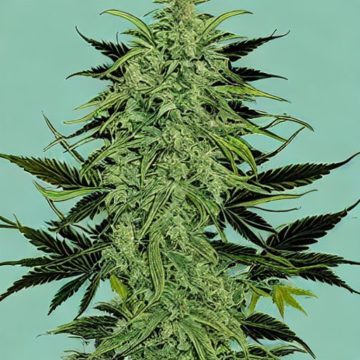Lisa Niven-Phillips in Vogue:
 From Matt Hancock’s WhatsApp messages to Ariana DeBose’s viral BAFTAs rap, there are certain topics you just can’t avoid if you spend any significant amount of time online. One of the most oft-discussed subjects of recent months? The irrepressible rise of semaglutide medications. A class of injectable drugs which work to suppress appetite and slow down digestion by replicating hormones produced naturally within the body, semaglutide medications such as Ozempic and Wegovy can control high blood sugar in people with type 2 diabetes, as well as facilitating weight loss in those with obesity. But, perhaps unsurprisingly in a culture which places thinness on a pedestal, this ability to help users shed pounds rapidly has piqued the interest of those beyond just the patients it was initially intended to treat. And with the National Institute for Health and Care Excellence (NICE) having just approved Wegovy for use in the UK specifically as a weight loss aid, the conversation looks set to get more complicated still.
From Matt Hancock’s WhatsApp messages to Ariana DeBose’s viral BAFTAs rap, there are certain topics you just can’t avoid if you spend any significant amount of time online. One of the most oft-discussed subjects of recent months? The irrepressible rise of semaglutide medications. A class of injectable drugs which work to suppress appetite and slow down digestion by replicating hormones produced naturally within the body, semaglutide medications such as Ozempic and Wegovy can control high blood sugar in people with type 2 diabetes, as well as facilitating weight loss in those with obesity. But, perhaps unsurprisingly in a culture which places thinness on a pedestal, this ability to help users shed pounds rapidly has piqued the interest of those beyond just the patients it was initially intended to treat. And with the National Institute for Health and Care Excellence (NICE) having just approved Wegovy for use in the UK specifically as a weight loss aid, the conversation looks set to get more complicated still.
More here.


 Kate Aronoff in The New Republic:
Kate Aronoff in The New Republic: James K. Galbraith in The Nation:
James K. Galbraith in The Nation: Max Gallien and Giovanni Occhiali in Sidecar:
Max Gallien and Giovanni Occhiali in Sidecar: P
P On Sept. 29 and 30, 1941, in a ravine just outside Kyiv called Babyn Yar (“Babi Yar” in Russian), Nazis executed nearly 34,000 Jews over the course of 36 hours. It was the deadliest mass execution in what came to be known as the “Holocaust by Bullets.” We were never supposed to know it happened. In 1943, as the Nazis fled Kyiv, they ordered the bodies in Babyn Yar to be dug up and burned, to erase all memory of what they’d done.
On Sept. 29 and 30, 1941, in a ravine just outside Kyiv called Babyn Yar (“Babi Yar” in Russian), Nazis executed nearly 34,000 Jews over the course of 36 hours. It was the deadliest mass execution in what came to be known as the “Holocaust by Bullets.” We were never supposed to know it happened. In 1943, as the Nazis fled Kyiv, they ordered the bodies in Babyn Yar to be dug up and burned, to erase all memory of what they’d done. W
W
 The specter of being trapped in a world of illusions has haunted humankind much longer than the specter of A.I. Soon we will finally come face to face with Descartes’s demon, with Plato’s cave, with the Buddhist Maya. A curtain of illusions could descend over the whole of humanity, and we might never again be able to tear that curtain away — or even realize it is there.
The specter of being trapped in a world of illusions has haunted humankind much longer than the specter of A.I. Soon we will finally come face to face with Descartes’s demon, with Plato’s cave, with the Buddhist Maya. A curtain of illusions could descend over the whole of humanity, and we might never again be able to tear that curtain away — or even realize it is there. Between 1910 and 1940, thousands of Chinese immigrants were detained—sometimes for months—in facilities on Angel Island, off the coast of San Francisco.
Between 1910 and 1940, thousands of Chinese immigrants were detained—sometimes for months—in facilities on Angel Island, off the coast of San Francisco. A record outbreak of
A record outbreak of  The very deepest worries center around the question of AGI, Artificial General Intelligence, and the question of the Singularity. AGI is a form of artificial intelligence so advanced that it could understand the world at least as well as a human being in every way that a human being can. It is not too far a step from such a possibility to the idea of AGIs that can produce AGIs and improve both upon themselves and further generations of AGI. This leads to the Singularity, a point at which this production of super-intelligence goes so far beyond that which humans are capable of imagining that, in essence, all bets are off. We can’t know what such beings would be like, nor what they would do. Which sets up the alignment problem. How do you possibly align the interests of super intelligent AGIs with those of puny humans? And as many have suggested, wouldn’t a super intelligent self-interested AGI be rather incentivized to get rid of us, since we are its most direct threat and/or inconvenience? And even if super AGIs did not want to exterminate humans, what is to ensure that they would care much what happens to us either way?
The very deepest worries center around the question of AGI, Artificial General Intelligence, and the question of the Singularity. AGI is a form of artificial intelligence so advanced that it could understand the world at least as well as a human being in every way that a human being can. It is not too far a step from such a possibility to the idea of AGIs that can produce AGIs and improve both upon themselves and further generations of AGI. This leads to the Singularity, a point at which this production of super-intelligence goes so far beyond that which humans are capable of imagining that, in essence, all bets are off. We can’t know what such beings would be like, nor what they would do. Which sets up the alignment problem. How do you possibly align the interests of super intelligent AGIs with those of puny humans? And as many have suggested, wouldn’t a super intelligent self-interested AGI be rather incentivized to get rid of us, since we are its most direct threat and/or inconvenience? And even if super AGIs did not want to exterminate humans, what is to ensure that they would care much what happens to us either way? There are certain sweet-smelling, sugarcoated lies current in the world which all politic men have apparently tacitly conspired together to support and perpetuate. One of these is that there is such a thing in the world as independence: independence of thought, independence of opinion, independence of action.
There are certain sweet-smelling, sugarcoated lies current in the world which all politic men have apparently tacitly conspired together to support and perpetuate. One of these is that there is such a thing in the world as independence: independence of thought, independence of opinion, independence of action.